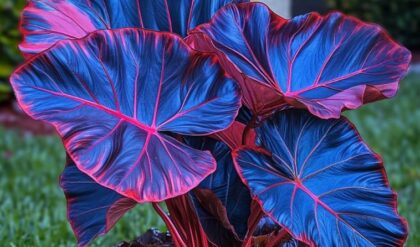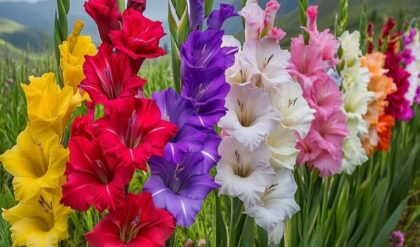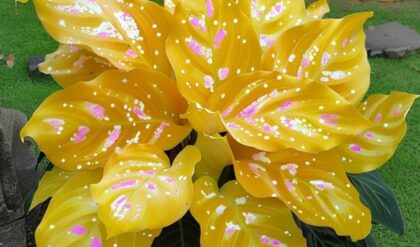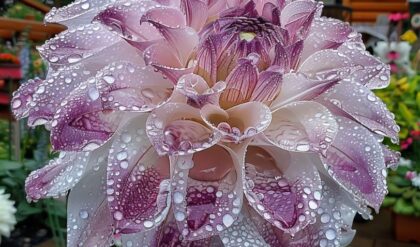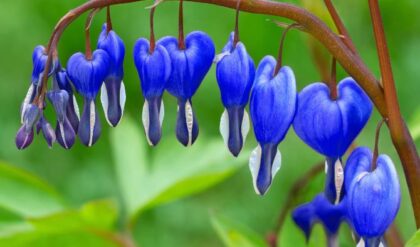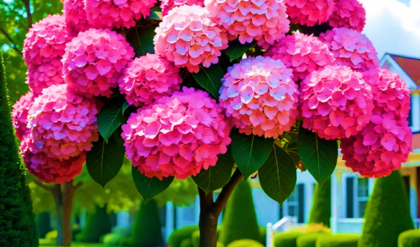The Dragon Tree Flower, born from the fascinating Dracaena cinnabari—commonly known as the Socotra dragon tree or dragon blood tree—is a botanical marvel that adds ethereal beauty and allure to its native environment, the isolated Socotra archipelago in Yemen. This remarkable tree has intrigued botanists and plant enthusiasts alike, not only for its unique appearance but also for the implications it bears in ecology, culture, and aesthetic appreciation.
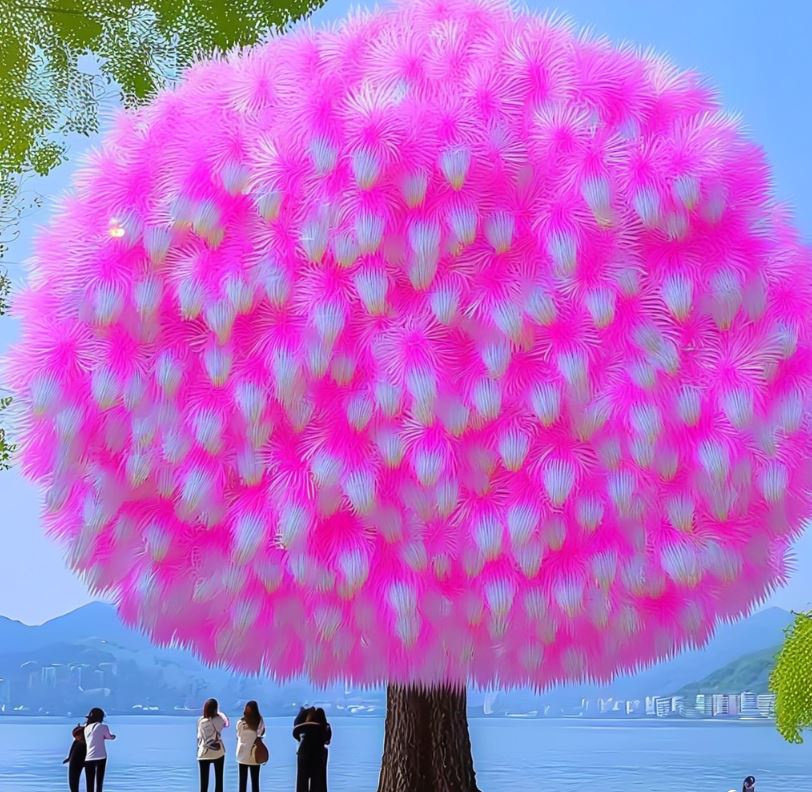
The Enigma of the Dragon Blood Tree
The Dracaena cinnabari is renowned for its distinctive appearance: an umbrella-shaped canopy that hosts clusters of white and pink flowers, creating a stunning visual spectacle against the stark, arid landscape of Socotra. These tree flowers appear almost magical, reminiscent of nature’s artistry, where flora transcends mere functionality and enters the realm of beauty.
Captivating Canopy and Blooms
The Dragon Tree Flower’s umbrella-shaped canopy is a sight to behold, with its branches spreading out like an intricate lace umbrella against the clear sky. The clusters of white and pink blooms that adorn this unique silhouette add an ethereal quality to the tree, almost as if it were a living, breathing work of art.
The delicate flowers possess a mesmerizing allure, with their delicate petals and soft hues contrasting beautifully with the rugged, sun-baked terrain of Socotra. The juxtaposition of these elegant blooms against the raw landscape hints at a greater narrative about resilience and adaptation in the face of environmental challenges.
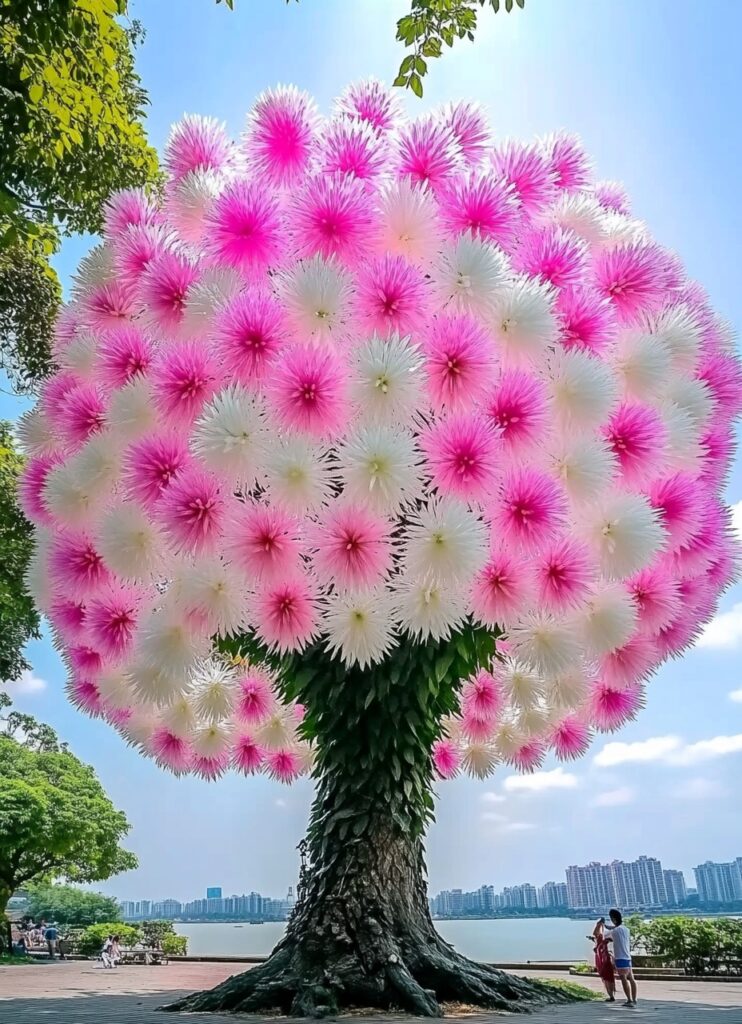
Resilience and Adaptation
Despite the harsh, arid conditions of its native habitat, the Dracaena cinnabari has evolved to thrive in this seemingly inhospitable environment. Its ability to adapt and flourish in the face of adversity is a true testament to the ingenuity of nature.
The tree’s unique morphology, with its thick, succulent trunk and water-storing capabilities, allows it to conserve resources and withstand periods of drought. This resilience is further exemplified by the tree’s capacity to recover from damage, often regenerating new growth from its sturdy base.
The Dragon Tree Flower’s adaptations not only ensure its own survival but also contribute to the overall ecological balance of the Socotra archipelago. Its presence helps to stabilize the fragile desert ecosystem, providing shelter and sustenance for a diverse array of plant and animal species.
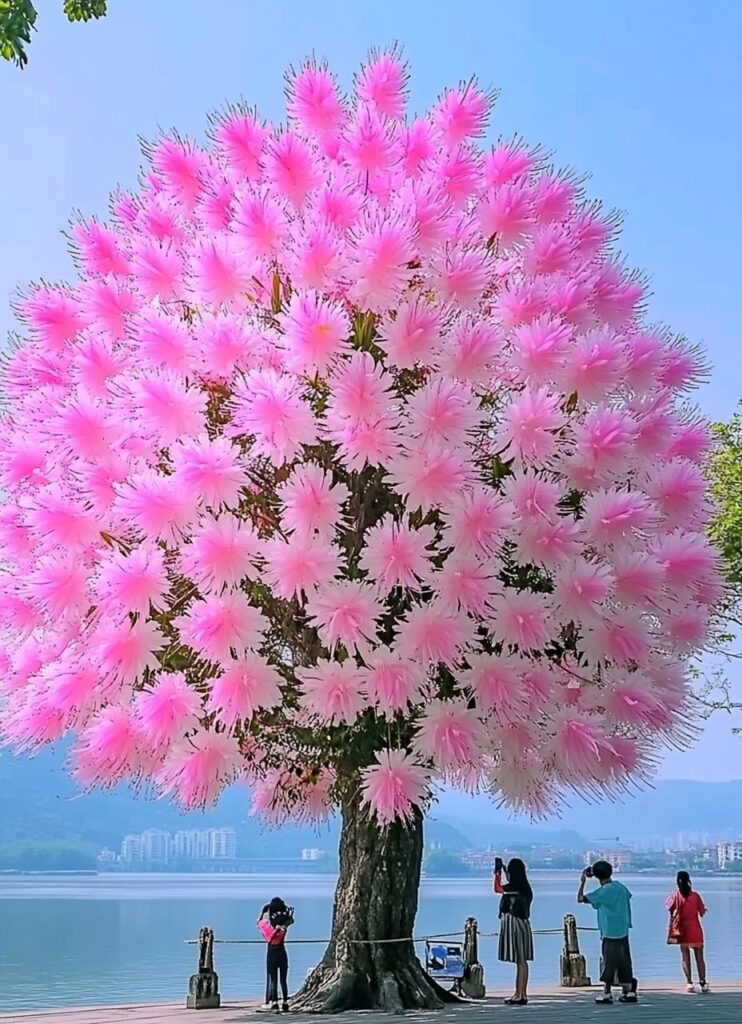
Cultural Significance
Historically, the resin derived from the Dracaena cinnabari, referred to as dragon’s blood, was highly sought after and utilized in various applications—from traditional medicine to dye and incense. This connection to human culture raises captivating questions about how ecosystems and biodiversity can significantly influence cultural practices and economies.
The Allure of Dragon’s Blood
The deep, rich red color of the dragon’s blood resin has long held a mystical appeal, evoking images of ancient rituals and exotic trade routes. This natural resource, unique to the Socotra archipelago, has been a cultural and economic driver for centuries, connecting far-flung civilizations through the exchange of this coveted commodity.
Imagine ancient traders transporting the vibrant red resin to distant lands, bridging cultures and tying together disparate societies through a singular object of beauty and utility. The dragon’s blood resin became a symbol of Socotra’s uniqueness, a tangible representation of the island’s ecological and cultural heritage.

Medicinal and Practical Applications
The versatility of the dragon’s blood resin extended beyond its aesthetic appeal, as it found practical applications in traditional medicine and other industries. The resin was believed to possess healing properties, used to treat a variety of ailments, from wounds to digestive issues.
In addition to its medicinal uses, the dragon’s blood resin was also employed as a natural dye, coloring textiles and other materials with its vibrant hue. Its use as an incense further highlighted its multifaceted role in cultural practices, from religious ceremonies to everyday rituals.
The ecological marvel of the Dracaena cinnabari, therefore, serves as more than just a plant; it acts as a vessel for intercultural exchange throughout history, linking diverse societies through the trade and utilization of this remarkable natural resource.
Biodiversity and Conservation
In today’s increasingly interconnected world, understanding the ecological role of the dragon blood tree becomes ever more significant. As a species endemic to Socotra, the dragon tree contributes greatly to the island’s unique biodiversity, ensuring the sustenance of various life forms and creating a web of interdependence among plants, insects, and animals.

The Dragon Tree’s Ecological Niche
The Dracaena cinnabari is a keystone species within the Socotra archipelago, playing a crucial role in the delicate balance of the island’s ecosystem. Its presence supports a diverse array of flora and fauna, from the nectar-feeding insects that pollinate the dragon tree’s flowers to the birds and small mammals that rely on its foliage and shade for shelter and sustenance.
By maintaining this intricate ecological network, the dragon blood tree ensures the preservation of Socotra’s biodiversity, which is recognized as one of the most unique and endangered in the world. Its role as a habitat and resource provider underscores the vital importance of conserving this remarkable species.
Threats and Conservation Efforts
However, the delicate balance of Socotra’s ecosystem is vulnerable to various threats, including climate change and habitat destruction. Factors such as overgrazing, unsustainable resource extraction, and the encroachment of invasive species can all contribute to the decline of the Dracaena cinnabari and the broader biodiversity of the island.
The very act of admiring the Dragon Tree Flower’s beauty invokes a call to action in the context of conservation efforts, highlighting the responsibility we share in preserving such wonders. Consider, for instance, how increased tourism around the aesthetic appeal of these trees could promote both awareness and protective measures, potentially injecting new life into local economies while safeguarding natural treasures.
Initiatives focused on sustainable land management, habitat restoration, and community-based conservation are essential to ensuring the long-term survival of the Dracaena cinnabari and the rich tapestry of life it supports. By recognizing the intrinsic value of this remarkable species, we can work towards a future where the Dragon Tree Flower continues to captivate and inspire generations to come.
The Aesthetic Experience
Experiencing the blooms of Dracaena cinnabari can evoke feelings similar to viewing a masterfully painted canvas in a gallery. The vibrant colors mingle to create a breathtaking spectacle, igniting appreciation for nature’s artistry and provoking a deeper connection with the natural world.
Artistic Inspiration and Emotion
Many who encounter the Dragon Tree Flower might feel compelled to ponder the intersectionality of aesthetics and emotion, mirroring how art can inspire and provoke introspection. The ethereal beauty of the blooms, set against the stark, arid landscape, can elicit a range of responses, from wonder and awe to a profound sense of connection with the natural environment.
This aesthetic experience goes beyond the mere visual appreciation of the flowers; it invites observers to engage with the deeper implications of the tree’s existence. The stark contrast between the delicate blooms and the harsh surroundings serves as a thought-provoking reminder of the resilience and adaptability of nature, prompting visitors to reflect on their own place within the broader ecosystem.
Cultivating Ecological Awareness
By recognizing the aesthetic value of the Dragon Tree Flower, we can foster a deeper appreciation for the natural world and its intricate systems. This understanding can then translate into a greater commitment to conservation efforts, as individuals become more aware of the fragility and importance of preserving such botanical marvels.
The aesthetic experience of the Dracaena cinnabari, therefore, becomes not just a visual delight but a catalyst for cultivating ecological awareness and a sense of responsibility towards the environment. By acknowledging the beauty and significance of this species, we can actively engage in a dialogue with nature, forging a stronger connection that inspires us to protect and sustain the natural wonders that grace our planet.
Planting New Ideas
Plant enthusiasts and gardeners who are inspired by the magnificent form and structure of the dragon blood tree may wish to replicate its essence within their own spaces. If they recognize the importance of context and symbiosis inherent to this species, they can consciously attempt to cultivate environments that reflect such interconnections.
Contextual Cultivation
By understanding the Dracaena cinnabari’s native habitat and the ecological factors that contribute to its thriving presence, gardeners and plant enthusiasts can strive to create environments that mirror the conditions necessary for the tree’s growth and well-being. This may involve considerations such as soil composition, water availability, and climatic factors.
Replicating the dragon tree’s natural environment, however, is not just about recreating the physical aspects; it also requires an appreciation for the broader context in which the species exists. Gardeners should consider the web of interdependence that the Dracaena cinnabari is a part of, ensuring that their cultivation efforts support and enhance the overall ecosystem.
Fostering Ecological Dialogue
By connecting personal aesthetics with broader ecological systems, cultivators actively engage in a dialogue with nature, fostering appreciation, awareness, and commitment to maintaining the vibrant tapestry of life on our planet. The act of cultivating a dragon tree, or an environment that pays homage to its essence, becomes a means of expressing one’s reverence for the natural world and a willingness to participate in its preservation.
Through this process, gardeners and plant enthusiasts can become ambassadors for the Dragon Tree Flower, sharing its captivating story and inspiring others to consider the importance of biodiversity and sustainable practices. By nurturing these botanical marvels, they contribute to the ongoing conversation about our role as stewards of the natural world, ultimately working towards a future where such wonders can continue to thrive and enchant.
Conclusion
By analyzing the multifaceted aspects surrounding the Dragon Tree Flower, we unveil layers of ecological importance, cultural significance, and aesthetic wonder. Each bloom serves as a vivid reminder of nature’s ingenuity and the lessons we must embrace in our pursuit of sustainability and harmony.
The Dracaena cinnabari, with its captivating appearance, resilience, and intricate role within the Socotra archipelago, invites us to consider the intrinsic value of biodiversity and the responsibility we share in protecting it. Through the lens of this remarkable tree, we are challenged to broaden our perspectives, to recognize the interconnectedness of all living things, and to cultivate a deeper appreciation for the natural world.
As we continue to navigate the complexities of our rapidly changing world, the Dragon Tree Flower stands as a testament to the enduring power of nature, reminding us that beauty, resilience, and balance can coexist in the most unexpected places. By embracing the lessons this botanical marvel offers, we can work towards a future where the enchantment of the Dracaena cinnabari continues to captivate and inspire generations to come. Back Viết tiếpNext
